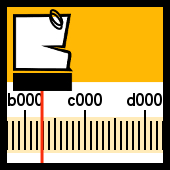DO YOU WISH TO CREATE A GENERAL FUND AND TEAM SPIRIT? DID YOU CHECK YOUR STRUCTURE?
Do You wish to create a general fund and team spirit? Did You check Your structure?
There are problems and their manifestations. The manifestations described here, in this task might be upsetting (might even cause indignation) for directors with the absence of motivation for employees to recommend goods/services of other departments, lack of willingness to do the work of a colleague during his absence, the presence of left out important tasks which no one wants to claim, a very tense condition in the collective etc.
Sometimes this leads to "secreting" between employees about some information.
When he faces such a situation, a director sometimes spontaneously starts to "design team motivation", to alter payroll fund, creating inside it, a premium fund "for general results" and create "brigades" and "teams".
In fact, "when there is no agreement among colleagues" – there are always reasons. They should be understood and eliminated, and not overpay "for peace and friendship". Despite the good thought, it will only cause an escalation of the problem, and not its solution.
These tasks are solved not by introducing team stimulation, but by organizing work, correctly setting the business-processes and literate motivation systems.
The most common management error which causes "team disease" is called "objective structuring", when the responsibility zones of managers inside the sales department are not properly assigned (they are attached to brands, goods groups etc.). Sometimes sales are not brought out into another section. I.e. the employees of departments which render services to Clients (consulting, service etc.), sell this service themselves.
Let’s see in examples.
See-below examples of formulations as they sounded (here, as everywhere else, all the examples are real):
Example.
Citation:
"We work with specific brands. We have brand-managers who are each responsible for their brands. Hence there is someone to ask. Consequently there is an attachment to the Client.
But what can be done for the brand-managers to recommend not only “their” brands but also (at least when the Client is interested) link each other, transferred the Client, if it was not possible to find anything corresponding?"
Example.
Citation:
"Our agency deals in advert placing in different media: in journals, on TV, on radio stations, on the Internet, on street advert posts and billboards and others.
Each agent promotes the advert through a specific media, in such a way that no specific agent can propose a full advertising service package to the Client. This is due to the fact that it is quite difficult to teach each agent the specifics of all the media available, also the quick change of staff among agents is high enough–that’s how the profession is.
That is why the agents have an excess duty when the advert customer requires a complex service, to write down the request and "hand over the contact" to a colleague. This actually, never happens.
The management tried to "attribute" the agent not only to "his" field but also to others, however there are many fields, and they got a messed up formula. They tried to attach a part of the salary to the results of "their" field and part to the "general result", calling it "team" and promoting its importance. But it did not work:"the agent’s own contribution to the general result "dissolved in other contributions. Different prepayments, which each time occurred for "general activities", did not correspond to the activity itself. The one who was a loser, thought it fell from the sky and those who were successful thought he was being fooled.
Yes it is difficult. Even after the agent transfers the complex request, the latter passes through several agents (according to specialization), each of whom prepares his proposal. And then, it is "unclear who" had to assemble everything into one whole commercial proposal which the first agent brought to the Client(since it is "my Client" and "does not go to everyone"). And the agent had to at least learn the minimum characteristics of different fields".
Example.
Citation:
"There are two fields in our company: sales of alcohol and sales of tobacco. And it is such that the trading representatives of one field (for example, "alcohol") come to the bar or shop where the trading representative of another field ("tobacco"). Or the contrary.
And the Client is uncomfortable, and we have conflicts".
It is obvious that the last example differs from the first two only with the fact in the last case, the ridiculous separation of two fields with the same Clients is very clear. It is also clear that sales representatives going to Clients in pairs is not a solution.
But is the last example so different from the first two in its model? No, it isn’t. In each of the described cases, the Client will lose his patience in the same way as would a random visitor who instead of going to his usual free supermarket, enters a shop with stands and small queues in each of the 5 sections and their own cashiers: "milk", "meat", "bread", "grocery" etc.
This means that, we should solve the problem and not "build a team".
We can see that when splitting everything into "fields", "product groups", "brands", "advertising media" (general term "into units"), we not only cause inconvenience (to the company itself and to its Clients), but also cause a non-linear growth in the number of halts since:
- The employees duplicate:
- The works of each other;
- The work of other departments;
- The same interactions with the same Partners(each comes with his own promotions for the same Clients);
- Almost always:
- Excessive demands for qualified employees;
- There is no single promotion politics, the budget splits;
- There are various products/brands:
- They have different turnovers/they are displayed differently,
- They are at different life cycles(they have different potentials), They have different functions("anchor", "profile" etc.),
- The resources for them are different(in a clever company),
But the product and brand managers have different "statuses" and the situation rapidly becomes conflictual.
Read other links about other features of such errors, and also about how you should structure the departments of the company.















